Peter Alexander, who created ethereal worlds out of resin, dies at 81
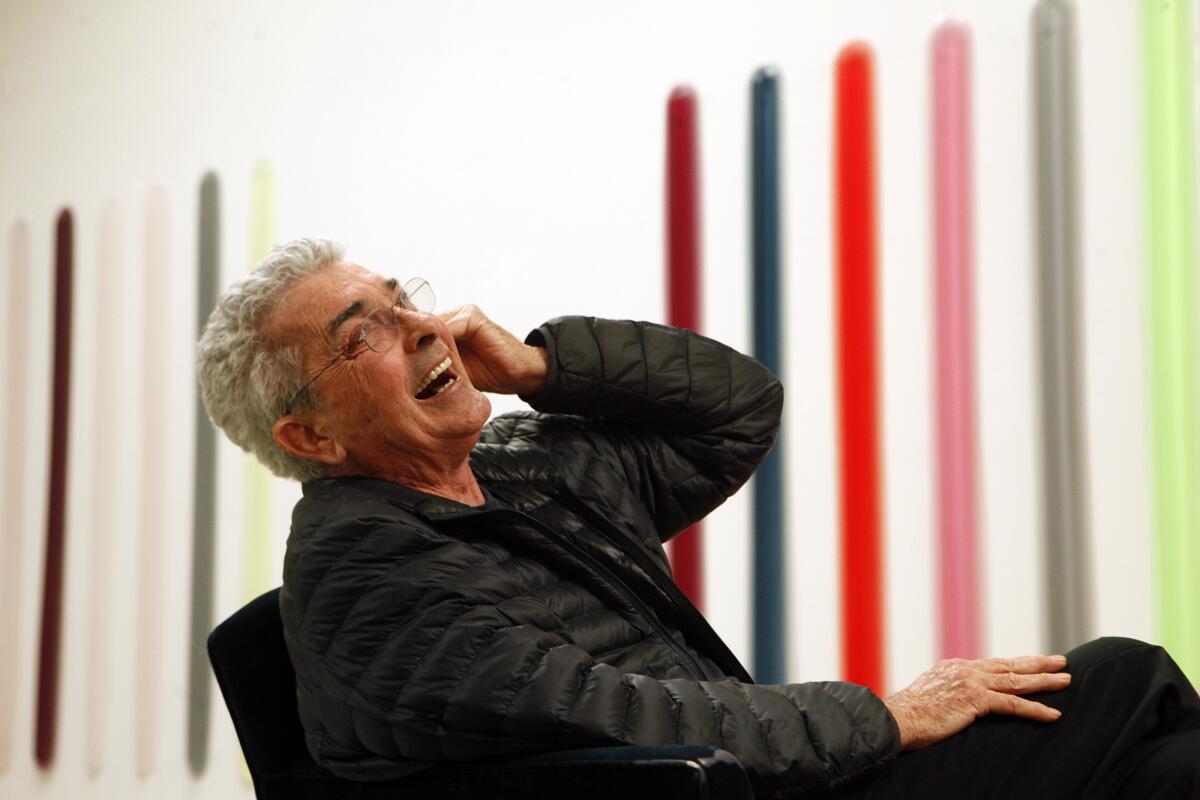
- Share via
For Peter Alexander, the moment that helped change the direction of his art arrived after a mundane session of ding repair on his surfboard in the 1960s.
He had poured some resin into a paper cup to seal his board, and over the course of several hours the resin hardened into a translucent puck.
“I remember at the bottom of the Dixie Cup, this clear material,” he told a documentary team from the Getty Conservation Institute in 2014. “And I was doing a project and I thought, ‘I bet this could be done in polyester, in this resin.’ So I started casting it in little things — like little boxes.”
Those experiments with industrial materials, begun when he was a student at UCLA, led to the creation of ethereal sculptures that evoked the quietly shifting nature of light, color and environment. And they put Alexander among the vanguard of Southern California’s Light and Space artists, a movement that brought buoyancy and perceptual play to Minimalism, which until then been dominated by the more austere forms emerging from the East Coast.
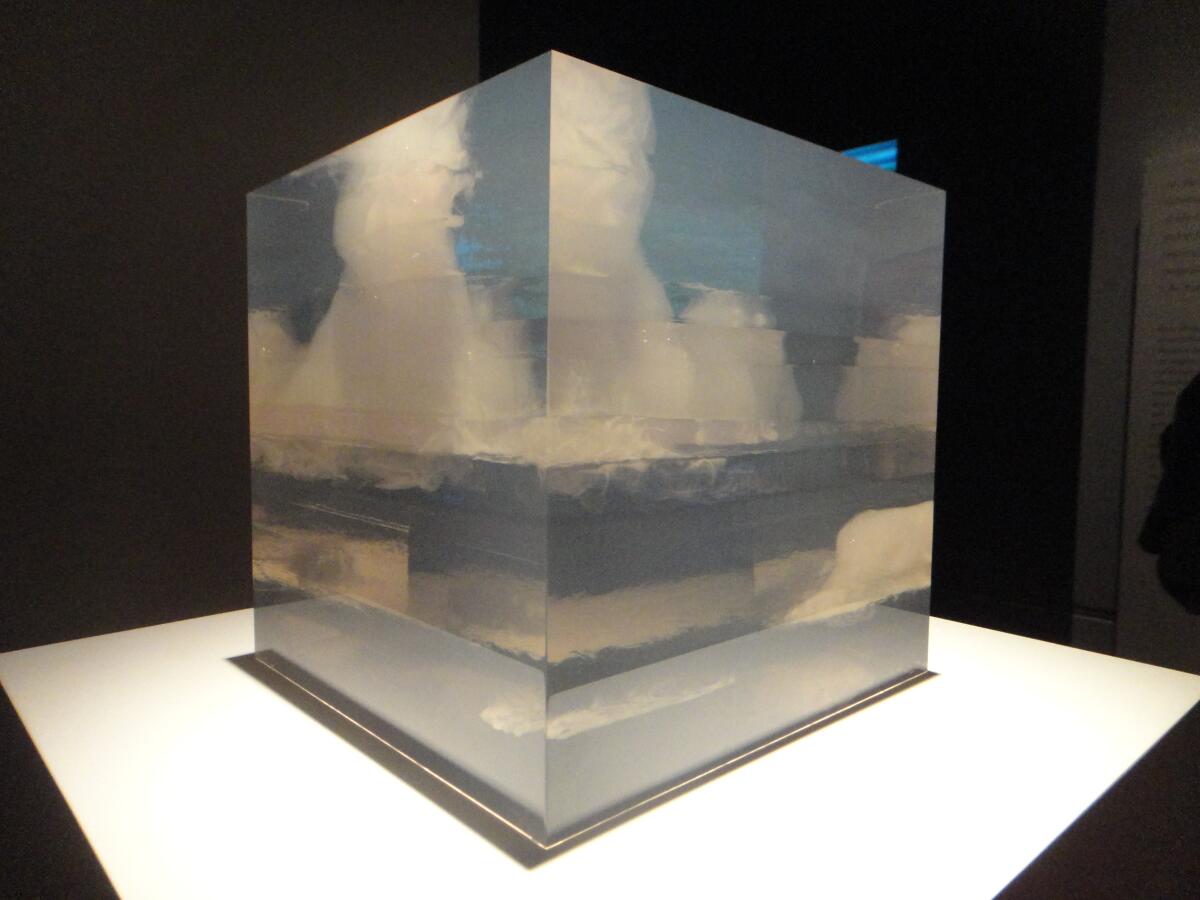
One of his early pieces, “Cloud Box,” from 1966, consisted of a resin cube that within its modest dimensions (it’s only 10 inches tall) seems to harbor an entire atmosphere of billowing clouds over an open plain. His later “wedge” sculptures, slender prisms of color that can reach heights of 8 feet, seemed to evanesce into transparent nothingness at the top.
Resin, which gets brittle over time, grows increasingly fragile as it ages. The material’s shifting nature, the artist told the Getty, made him “think about longevity and things being fugitive.”
Alexander died on Tuesday morning at his home in Los Angeles at the age of 81. His death was confirmed by representatives at Parrasch Heijnen Gallery, his long-time art dealers. The cause was undisclosed but said to be unrelated to COVID-19.
“He was a good spirit and very brilliant,” says Billy Al Bengston, an artist who also pioneered the use of industrial materials in the ‘60s. “He really did invent something that had never been done before, and that’s hard to do.”
The artists became friends when Bengston served as a juror on a citywide art exhibition and Alexander presented one of his early sculptures for consideration. “It had to be the ‘60s or ‘70s,” recalls Bengston. “I said, ‘Give him everything!’ It was the only thing that was any good. All the rest of the art show was crap. It was this little sculpture — just fantastic.”
Alexander was not as well known as some of his contemporaries in the Light and Space movement, such as Robert Irwin or James Turrell. Part of that is likely due to the varied nature of his work. Over the years, working with resin proved increasingly toxic to the artist — landing him in the hospital in the early 1970s. Around 1972, he abandoned the material altogether.
For more than three decades after that, he turned his attention to painting, producing a wide range of works on canvas, paper and, during one period, even velvet — many of them inspired by landscape, light and other natural phenomena, including his fascination with the idea of L.A. on fire. His paintings depicted luminous sunsets, explosive storms and moody cityscapes of Los Angeles at night.
At a 1992 lecture at the Laguna Art Museum, he explained his turn toward painting and his feelings at the time on minimalism, which he called a “crock.”
“I kept seeing these incredible sunsets,” he said. “I really wanted to make a picture — a real, dumb picture.”
Alexander returned to sculpture-making as the result of an accident — a fortuitous one.
In 2006, the Georges Pompidou Center in Paris included one of the artist’s resin sculptures from 1971 — a black bar that extended to a height of eight feet — in the group exhibition “Los Angeles: 1955-1985.” But the piece fell off the wall shortly before the show opened and was destroyed. (A wall piece by fellow Light and Space artist Craig Kauffman also broke during that unlucky exhibition.)
Luckily for Alexander, however, the museum not only paid the value of the sculpture — it gave him the resources to fabricate a new one.
The magical mysteries of color strut their shape-shifting stuff in “Peter Alexander, Sculpture 1966-2016: A Career Survey” at Parrasch Heijnen Gallery in Boyle Heights, where the exhibition is a garden of earthly delights.
“The Pompidou was really invested in the process of re-creating the work,” says Franklin Parrasch, who in addition to Parrasch Heijnen in L.A., operates a namesake gallery in New York. “He began working with a mannequin manufacturer in Los Angeles, and they were able to come up with the translucence he wanted — but with new safety standards.”
Instead of resin, Alexander could now work with urethane — which was less toxic and showcased pigment to better effect.
“That’s when I got interested in the effects of color,” Alexander said in the Getty interview, “how we feel about color, how we respond to color.”
And thus began a fruitful new wave of sculptural production, one that reflected his deep interest not just in materials, but in the nature of color.
“He was one of the most extraordinary colorists,” says Robin Clark, a curator who included Alexander’s work in the critically acclaimed exhibition “Phenomenal: California, Light, Space, Surface” at the Museum of Contemporary Art San Diego in 2011, part of the first Pacific Standard Time series. “He talks in different interviews of the influence of Rothko, which is easy to see. And he also talks of Vermeer — these sensitivities to the qualities of light.”
In fact, if there’s a thread that stitches together the disparate works from throughout his career, it is his thoughtful employment of tones: fruity oranges, dusty pinks, oceanic greens, incandescent yellows.
Clark describes his use of color as “sumptuous.” In a 1968 review in Artforum, critic Fidel Danieli noted that Alexander’s work evoked something “so sensuously romantic that they recall the luscious and Baroque Rubens more than mechanistic Newtonian physics.”
In a review of a solo show of his work at Parrasch Heijnen in 2016, Times contributor David Pagel describes colors that recall “the night sky seen from beneath the surface of an illuminated swimming pool, icicles reflecting sunshine on a sub-zero afternoon and waves gently lapping a sandy beach — just before disappearing into the wet sand.
“The combination of outlandish artifice and grounded experience is startling.”
Alexander was born on February 27, 1939, in Los Angeles — the fourth generation of a well-to-do Southern California family that ran oil fields. He grew up in Newport Beach, where the sun and the ocean were staples. (He was surfing by the age of 13.) One of the most lasting memories of his youth was watching a meteor shower over the beach.
“It was an indelible impression,” he told Times contributor Hunter Drohojowska-Philp in 1999. “I am sure that when you experience things like that when you are young, you’ve been branded somehow.”
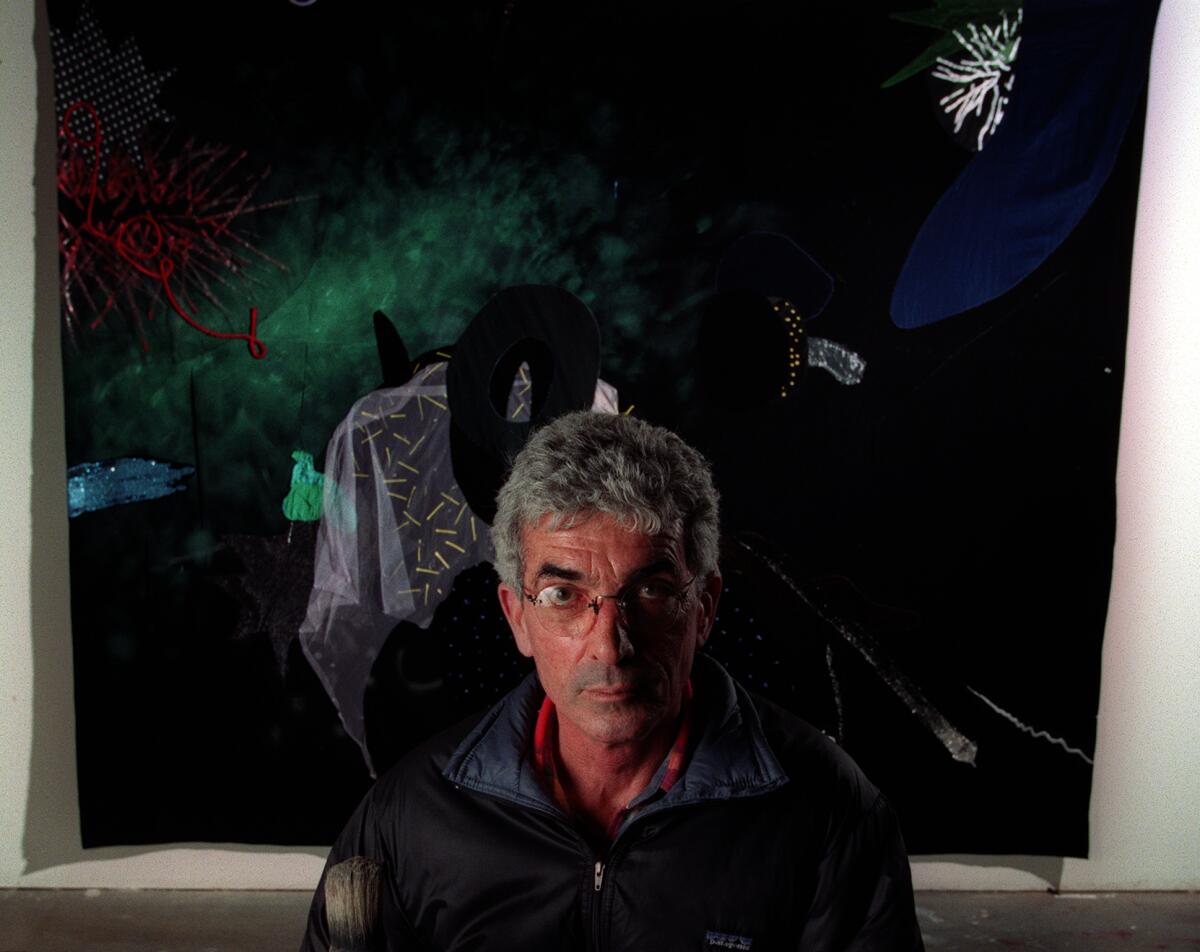
As a young man, he was initially interested in pursuing not art but architecture.
He attended the University of Pennsylvania in the late 1950s and studied under architect Louis Kahn. During summers, he produced architectural drawings in the Los Angeles studio of the Modernist Richard Neutra. He followed this with academic stints in architectural programs at the Architectural Association in London, UC Berkeley and USC, but ultimately decided “architecture wasn’t for me.”
So Alexander enrolled in the art department at UCLA, where he received his bachelor’s degree in 1965, followed by a master’s in fine arts in 1968. It was during his time at UCLA that he began to make his early sculptures in resin.
But even if he never formally practiced architecture, his architectural studies nonetheless shaped his work — especially when it came to connecting light and space. As he told The Times in 1999: “To use Louis Kahn’s phrase, ‘What does the building want to be?’ What does the object want to be? What does the material want to be?”
Clark, who worked with Alexander for several years in the lead-up to the show at MCASD, says architecture played a huge role in the ways he viewed and installed his work.
“When he starts making those box works,” she explains, “he did think about them as rooms that you could visually enter.”
Alexander, in fact, described some of the early resin pieces, such as “Cloud Box,” as “little rooms” that functioned as “places to go.”
His wedge sculptures, prisms of varying widths and heights that seem to evaporate at the top, were inspired by being in an airplane and coming in for a landing at LAX.
“I was looking down and noticing the ocean and how it changes color before it hits the sand,” he said in 2014. “And I thought, wow, that would be beautiful — that’d be perfect. So I did these that objects disappear at the top.”
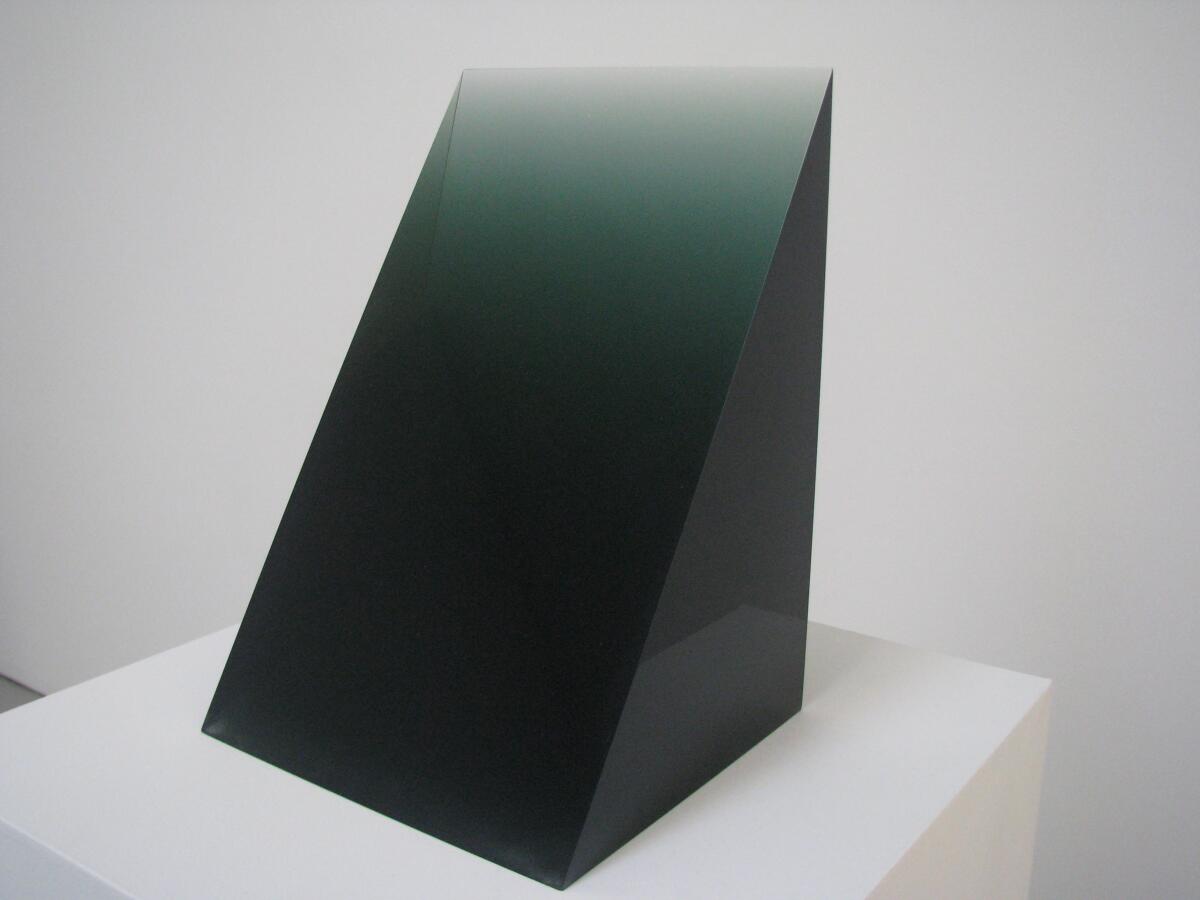
Alexander was a low-key figure — known for his sense of humor and his dedication to his work.
He will likely best be remembered for his Light and Space sculptures. (His pieces figure in major museum collections all over the U.S. — including New York’s Museum of Modern Art and the Los Angeles County Museum of Art.)
But over his career, he created a range of work — from traditional watercolors to more experimental multimedia works that employed found materials (some created with the assistance of his first wife, painter Clytie Alexander).
He did film work, creating the drawings for the 1975 film version of Nathanael West’s novel “The Day of the Locust.” He also made public art, such as the 48-foot mural titled “Blue” for Walt Disney Concert Hall in 2003.
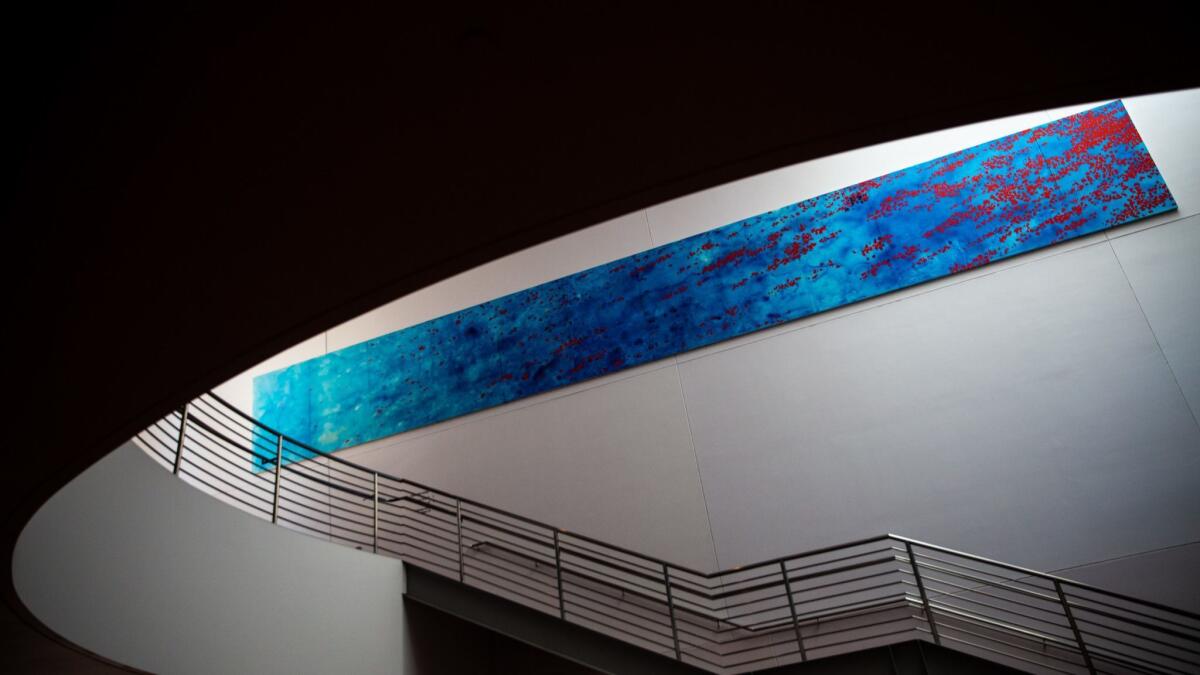
In 1999, the artist was the subject of a survey at the Orange County Museum of Art titled “Peter Alexander: In This Light,” which was organized by Naomi Vine, then the museum’s director, along with art critic Dave Hickey. Bengston worked on the installation design.
At the time, Alexander acknowledged the eclectic nature of his art. “On the surface, the work doesn’t seem consistent,” he told Drohojowska-Philp. “I am really looking forward to seeing all this stuff together. Then, I think, the connections will be obvious.”
Kramer, whose 1985 drama ‘The Normal Heart’ about the early years of the AIDS crisis was an angry indictment of inaction by officials, has died at 84.
The connection was color — but also something more primal. “Peter wasn’t just interested in the light, but the source of the light,” Parrasch says. “Peter was extremely spiritual.”
In his work, Alexander took the intangible and found a way to give it physical form.
The artist is survived by his second wife, artist and musician Claudia Parducci, and their son Pietro, as well as his first wife, Clytie Alexander, and their two daughters, Hope and Julia — all of whom live in L.A. He is also survived by his brother, Brooke Alexander, an art dealer who lives in New York.
A memorial service is being contemplated for a future date, when health conditions allow. In lieu of flowers, the family has requested donations in Alexander’s name to Art Division, an educational organization serving L.A.’s Rampart District.
More to Read
The biggest entertainment stories
Get our big stories about Hollywood, film, television, music, arts, culture and more right in your inbox as soon as they publish.
You may occasionally receive promotional content from the Los Angeles Times.











